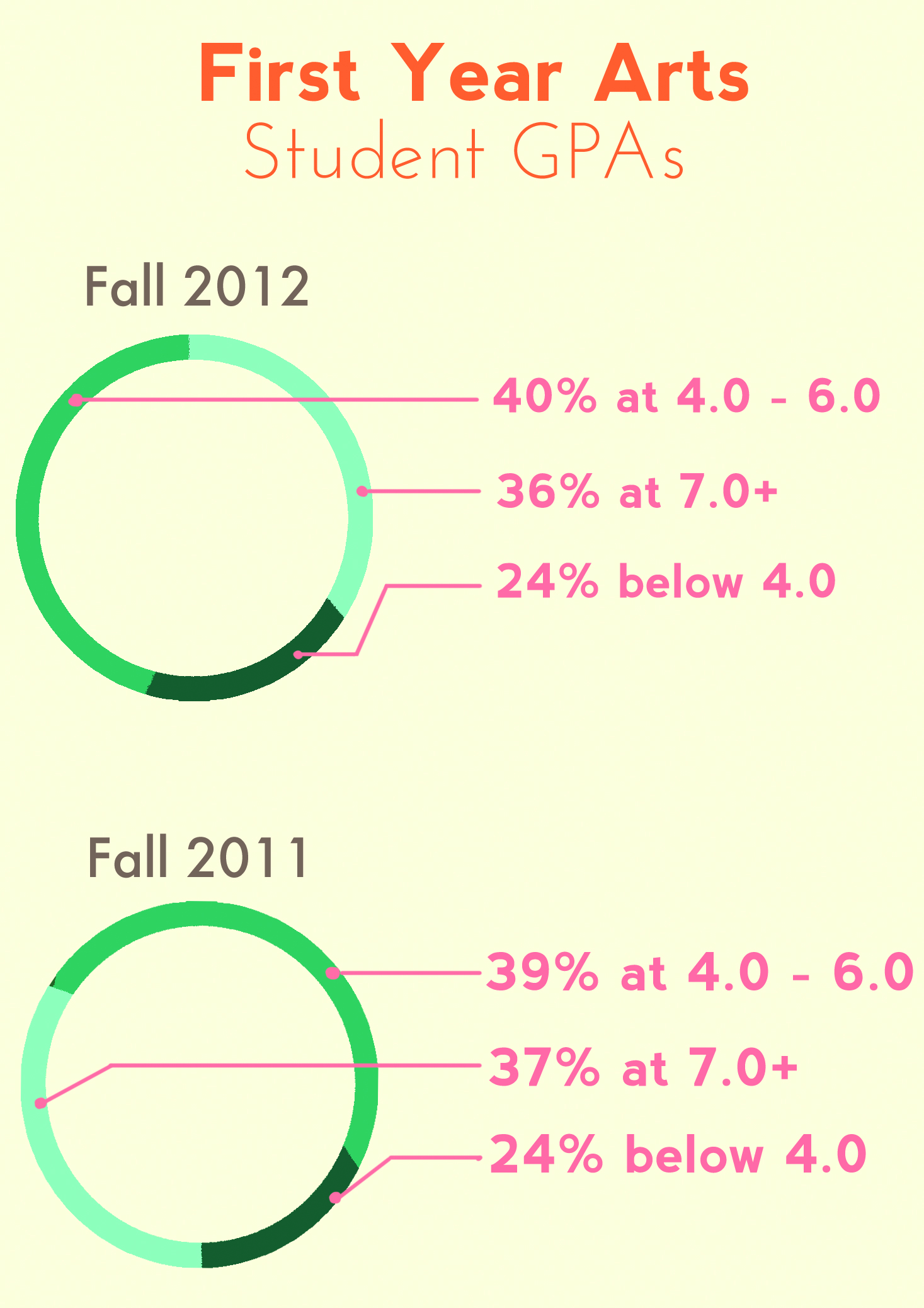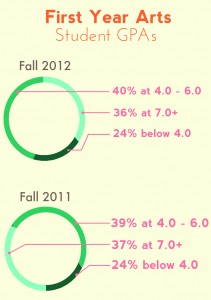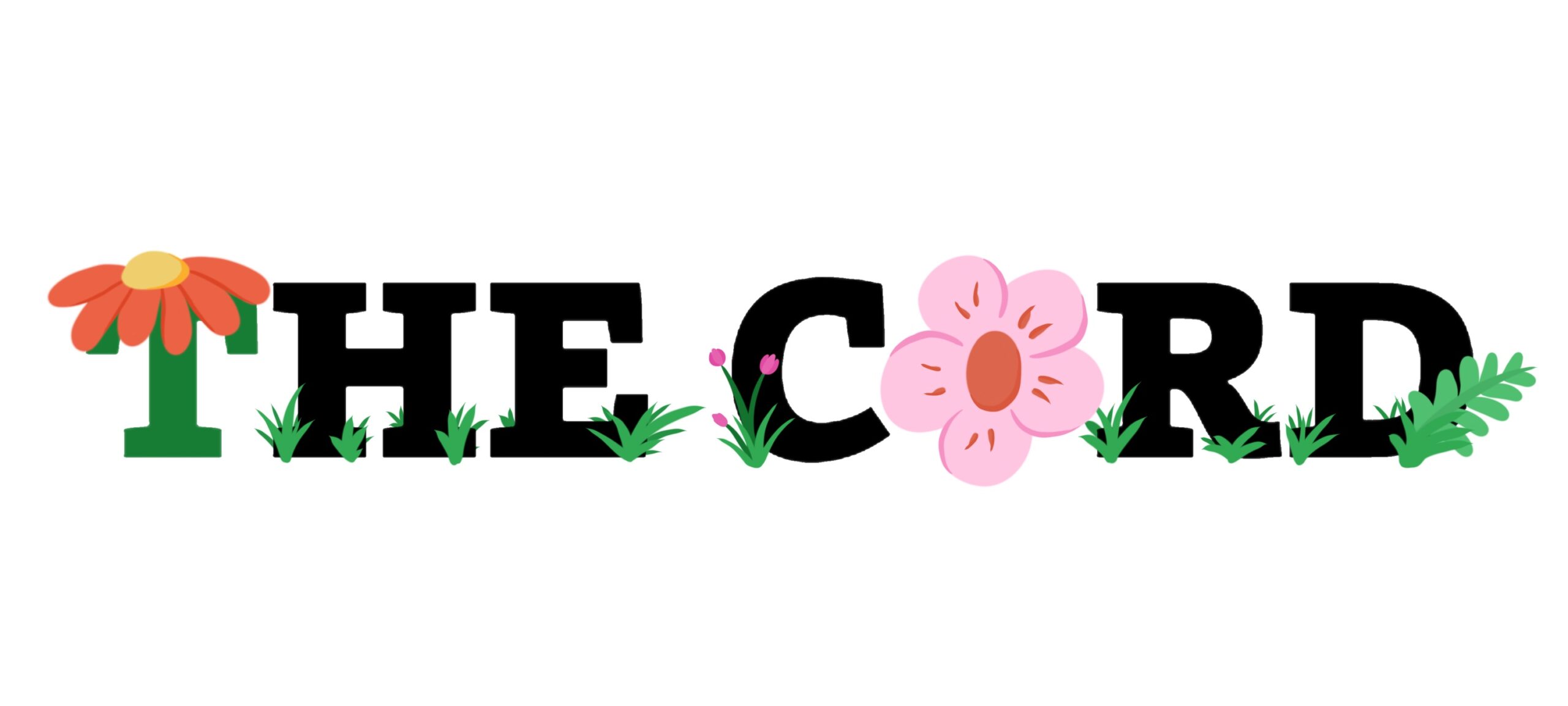First-year arts GPAs consistent this year


While it is common knowledge for upper-year students at Wilfrid Laurier University to check their Grade Point Averages (GPAs) online after each term, this practice may be less obvious to first-year students, who are use to high school, where report cards are distributed periodically throughout the year. The different system used at university can be problematic.
Julie Pong, an academic advisor for the faculty of arts, explained that she first noticed the problem three years ago.
She explained that every Laurier student’s GPA is assessed every four credits. This means that a first-year student’s GPA usually won’t be looked at until late April or early May.
“I just realized that a lot of students were coming in May, because they’d been assessed, that had no idea what their fall term grades were,” she continued.
“So there was always this surprise if they were required to withdraw from the institution if their GPA was less than a 2.0.”
With this realization, Pong implemented a system to send first-year art students letters at the end of the fall term to notify them of their progress.
“We sort of look at it as a bit of a report card,” she said. “Just to reach out to them to let them know where they’re at after fall term.”
Since then, each January, Pong has been running the data to compare first-year first-term GPAs to the prior year. Her study looking at Fall 2012 compared to Fall 2011 found GPAs were largely unchanged.
Most surprising, according to Pong, was that those who had GPAs of 4.0 and lower in the fall term remained at 24 per cent, the same percentage as last year.
“I didn’t know whether or not it would look a bit different because we had a higher entrance average,” she said. “The hope would definitely have been that there be less in the ‘less than 4.0’ range.”
The entrance average this year went up from 72 to 74 per cent.
Commenting on her reaction to the data, Pong said.
“This has just raised new questions for me that I didn’t have last year … I need to do some more investigating.”
Pong hopes that the assessment in May will help shed more light on the matter.
While Pong stressed the importance of assessing the fall term GPAs of first-year students in January, neither the faculty of science nor the faculty of business and economics have conducted comparisons as of yet.
Pam Bryden, associate dean of student services for the science faculty, commented that they currently do not have the data, but they are “in the throes of trying to do that.”
“The only thing I would say is that we probably do have a few more students that actively chose to withdraw in the fall term than we did last year,” she said.
Bryden specified that this was in the tens rather than hundreds and that most attributed their withdrawal to their feeling that the program wasn’t right for them.
“At this point I’m not too concerned with it,” she said. “I do think we need to continually look at our efforts of what we’re saying to high school students when we’re out there, but I think the university has taken a pretty proactive approach to … all the ways they approach students.”
Speaking from the business perspective, Lisa Keeping, the undergraduate business programs director, and Anne Ellis, the undergraduate business program advisor, also lacked data on fall term GPAs.
“I don’t know exactly how students have fared,” said Keeping. “Because honestly we don’t tend to find out from a program perspective until it comes to the point where we’re seeing if they’re meeting requirements to get into second year. It’s just too soon to know that.”
In accordance with the other faculties, GPAs will be looked at in April; however, they are not compared to previous years. In August, GPAs will be assessed to see who is going into second year.
“I think they’re doing as well as last year’s,” said Ellis. “It’s hard for us to see … but it seems very similar.”


